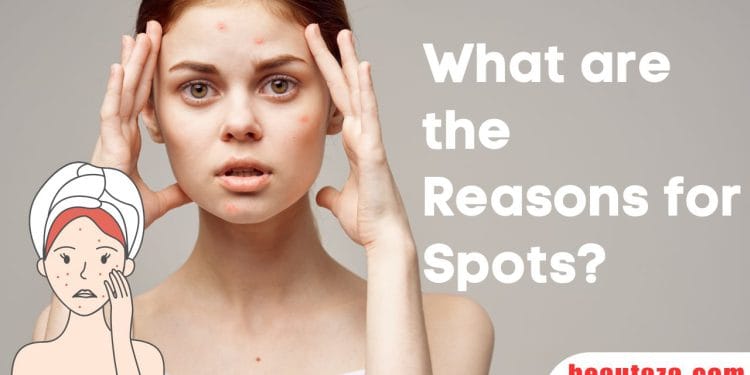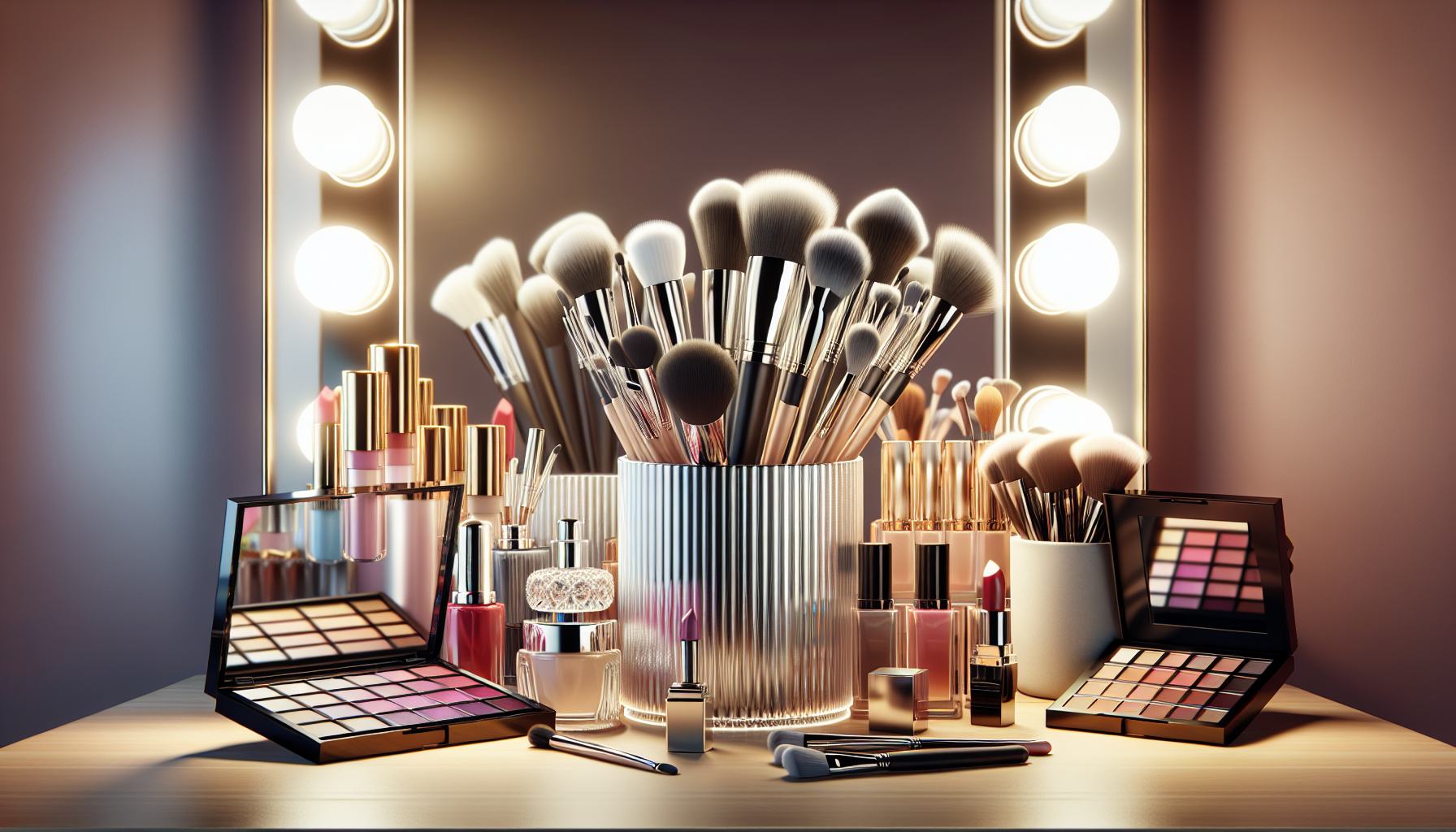
Whatever you choose to call them, spots, blemishes, or pimples are prevalent skin issues affecting individuals of all ages. Understanding the causes of spot production is crucial for efficient treatment and prevention, whether you suffer from infrequent breakouts or chronic acne. This blog article examines What Are the Reasons for Spots? You’ll be better prepared to deal with acne-prone skin and start down the path to a smoother, healthier complexion by obtaining insight into these underlying issues. So let’s study the realm of spots and the causes for their occurrence.
Hormonal Imbalance
Our bodies depend heavily on hormones; any imbalances may be seen in our skin’s appearance. Hormonal changes often link to spot development, especially during puberty, menstruation, or pregnancy. Let’s look more closely at how hormone imbalances influence the appearance of spots:
Production of Sebum and Androgens:
Androgen, a class of hormones that includes testosterone, is one of the main hormones implicated in the development of spots. Androgen levels rise throughout puberty, boosting the sebaceous glands in our skin. Sebum, an oily fluid that aids in moisturizing and protecting the skin, is produced by these glands. But high androgen activity may cause sebum to create excessively, clogging pores and causing spots to appear.
Periodic Cycle:
Hormonal changes often happen to women throughout their menstrual cycle. Progesterone and estrogen levels fall in the days before menstruation, whereas androgen levels stay primarily constant. Sebum production may rise due to this hormonal change, making breakouts more likely.
Pregnancy:
Another time when the skin might suffer from hormonal changes is during pregnancy. Increased hormone levels, such as estrogen and progesterone, may activate the sebaceous glands, resulting in an oily complexion and the probable development of spots. Pregnancy-specific skin disorders like acne or melasma (dark spots on the skin) may affect certain women.
Excessive Oil Production
Spots often appear due to excessive sebum production or oil production. Sebum is necessary for keeping skin moisturized, but too much of it may clog pores and cause spots to appear on the skin. Let’s look at the reasons why our skin produces too much oil and how it impacts our skin:
Genetics:
The quantity of oil that our skin secretes is influenced by genetics. Your risk of having excessive oil production may increase if you have a family history of oily skin. Hereditary factors influence the number of sebaceous glands and the sebum production level.
hormonal influences
Hormonal abnormalities, as previously noted, may cause an increase in sebum production. The sebaceous glands may be stimulated to generate more oil by androgens like testosterone. Hormonal changes associated with puberty, menstrual cycles, or hormonal diseases can cause spots and excessive oiliness on the skin.
Stress:
Stress may significantly impact our skin’s health, especially oil production. The body releases the stress hormone cortisol when we are under pressure. Increased oil production from the sebaceous glands brought on by high cortisol levels may clog pores and cause outbreaks.
Clogged Pores and Acne
Whiteheads, blackheads, and inflammatory lesions are all symptoms of acne, often preceded by clogged pores. You may successfully treat this skin issue by knowing how pore plugging occurs and how it relates to acne. Let’s investigate the contributing factors:
Dried-out skin cells:
Our skin naturally loses dead skin cells as part of the normal regeneration process. However, if these cells don’t shed correctly, they may build up on the skin’s surface, mixing with sebum and clogged pores. People with oily skin often go through this procedure.
Extra Sebum
As was previously mentioned, excessive sebum production may lead to blocked pores. Dead skin cells and extra oil combine to produce a clog that obstructs the pore’s entrance.
Bacteria:
Our skin is naturally covered with bacteria, notably Propionibacterium acnes (P. acnes). However, a blocked pore provides the perfect habitat for these bacteria to grow. P. acnes consumes sebum and produces inflammatory compounds that start an immunological reaction. This reaction results from redness, swelling, and the development of pimples.
Bacterial Infections
In particular, propionibacterium acnes (P. acnes) is intimately associated with developing inflammatory acne. It is possible to create efficient preventative and treatment methods for acne by understanding the function of bacterial infections in the condition. Now let’s get into the specifics:
Propionibacterium acnes
On our skin, P. acnes is a bacteria that lives there naturally. It has no adverse effects under typical circumstances. P. acnes, however, may increase in favorable environments, including closed pores. The bacteria feeds on sebum and produces chemicals that cause the skin to become inflamed.
Acne that is inflamed:
An immunological reaction occurs when P. acnes grows in a blocked pore. The body delivers white blood cells to the damaged region to combat bacterial infection. The immune response in inflammatory acne causes swelling, redness, inflammation, and the development of papules, pustules, or nodules.
Scarring and severity:
Acne may range in intensity from moderate to severe, with painful cystic acne often accompanying extreme instances. In more serious cases, the infection and inflammation may penetrate deeper layers of the skin, sometimes leaving scarring. Treating bacterial infections and controlling inflammation is necessary to avoid long-term skin damage.
Lifestyle Factors
Lifestyle, genetics, and biological factors may affect skin health. These lifestyle changes may prevent spots and brighten skin. Let’s look at several crucial lifestyle factors that may impact marks:
Diet:
Diet may affect skin health. According to a study, sugary meals, refined carbohydrates, and unhealthy fats may increase sebum production and inflammation, which may cause spots. A diet rich in fruits, vegetables, whole grains, and lean meats provides skin-healthy nutrients.
Eat well: Nutrient-dense foods, including leafy greens, berries, shellfish, nuts, and seeds, are advised. These meals include antioxidants, vitamins, and minerals for good skin.
Stress:
Spots may develop when there is an increase in sebum production and inflammation. Also, stress may cause bad habits like plucking at your face or skipping out on skincare, exacerbating skin conditions.
Stress relief: Use meditation, deep breathing, exercise, and your favorite hobbies to reduce stress. Mental and emotional wellness may improve skin health.
Smoking:
Smoking harms your skin and body. It reduces blood flow and oxygen delivery by constricting the skin’s weakest arteries. Dull skin, inconsistent tone, and impaired wound healing are possible. Smoking may worsen acne.
To enhance your skin and health, quit smoking. Talk to doctors, support groups, or smoking cessation programs.
Sleep:
Poor sleep may slow the body’s repair and renewal. Spots may result from inflammation, hormone imbalances, and immune system damage.
Prioritize rest: Sleep 7-9 hours a night. Establish a bedtime routine, warm your bedroom, and practice good sleep hygiene to improve sleep.
Environmental Factors
Pollution:
Skin damage from air pollution, which includes particle matter and chemicals, is possible. Pollutants can permeate the skin, resulting in oxidative stress, inflammation, and harm to the skin’s barrier defenses. As a result, your skin may produce more sebum, develop blocked pores, and develop spots.
Keep your skin safe: Antioxidant-rich skincare products may help you fight the impacts of pollution. Consider wearing a hat or scarf as a physical barrier in a polluted area. Properly cleansing your skin may also aid in removing contaminants.
U.V. Radiation
One significant environmental element that may harm the skin is exposure to sun ultraviolet (U.V.) light. Overexposure to U.V. radiation increases the chance of developing skin cancer, sunburn, and early aging. Additionally, U.V. rays may increase sebum production and aid in spot development.
Apply sunscreen: Even on overcast days, use a broad-spectrum sunscreen with at least SPF 30. Reapply every two hours, and seek cover from the sun when it’s most intense.
Whether that is harsh
Extreme climatic conditions may dehydrate the skin, causing dryness, irritation, and the risk of spot development. Examples include freezing temperatures, low humidity, and strong winds.
Exposure to chemicals:
The skin may become irritated and lose its natural equilibrium when exposed to strong chemicals, such as those in certain cleaning products, industrial environments, or skincare products. Inflammation, dryness, and the development of trigger spots may result from this.
Read –










